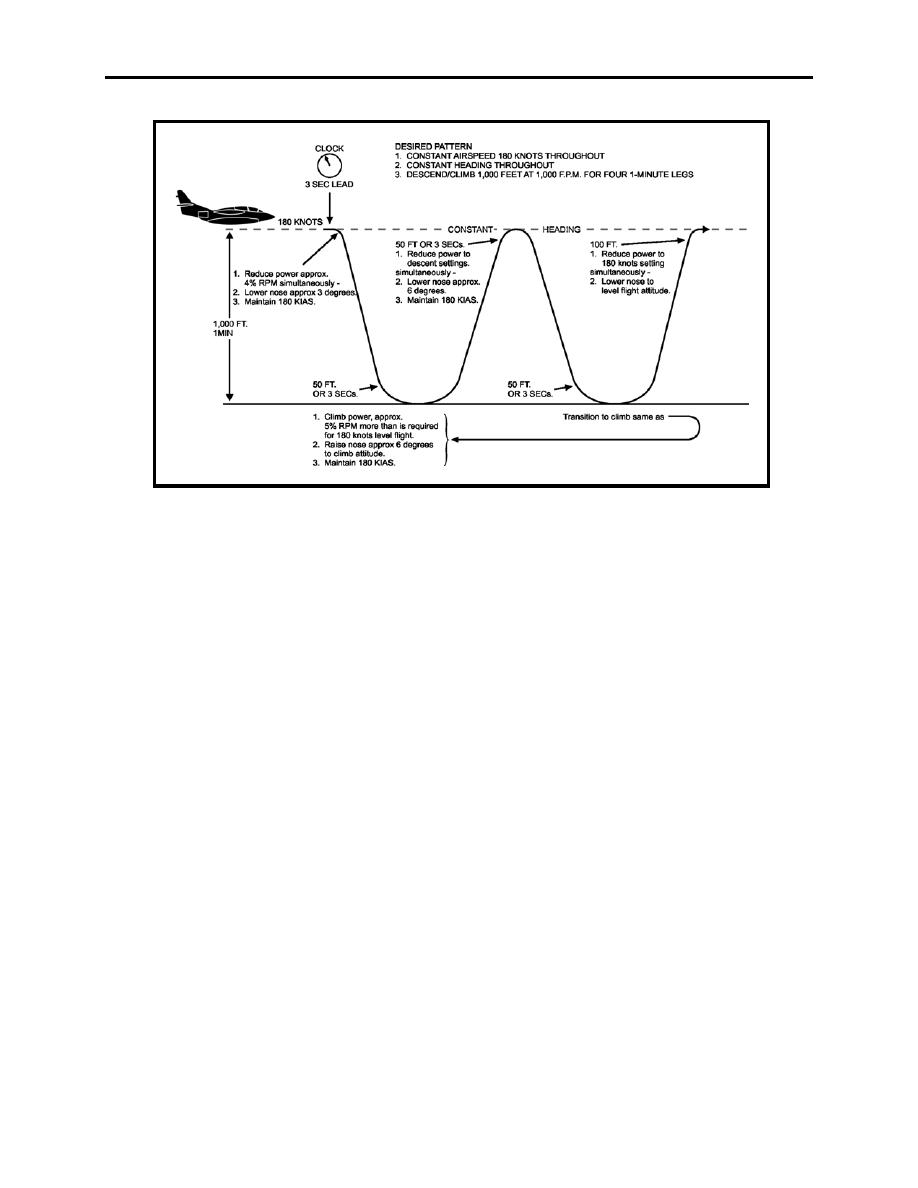 |
|||
|
|
|||
|
|
|||
| ||||||||||
|
|  CHAPTER ONE
BASIC INSTRUMENT PROCEDURES
Figure 1-9 The S-1 Pattern
The transition from the descent to the climb is started three seconds prior to the end of the
descending minute or about 50 feet prior (whichever occurs first) to the end of the 1000 foot
descent by simultaneously adding power to approximately 85% (5% above level flight power
setting) and smoothly raising the nose to the climbing attitude.
The transition from the climb to the descent is started 3 seconds prior to the end of the climbing
minute, or about 50 feet prior to reaching the original altitude by simultaneously reducing the
power by approximately 9% and lowering the nose to the descending attitude. A transition to a
climb to the original altitude is executed at the end of the third minute as previously discussed.
Complete the pattern by reducing the power to that required for pattern airspeed (approximately
80%), and simultaneously lowering the nose to the level flight attitude, approximately 50 feet
prior to reaching the level off altitude.
During the maneuver, the airspeed is controlled by the nose attitude, and the rate of climb or
descent is controlled by the power. One thousand FPM rate of climb/descent is determined by
referencing the clock and altimeter (after 15 seconds elapsed time, the aircraft should have
climbed or descended 250 feet, etc.).
110. UNUSUAL ATTITUDES
An unusual attitude is an aircraft attitude occurring inadvertently. It may result from turbulence,
distraction of cockpit duties, instrument failure, inattention, or spatial disorientation. In most
instances, these attitudes are mild enough for the pilot to recover by re-establishing the desired
attitude without resorting to a prescribed recovery procedure. Recoveries from unusual attitudes
that involve extreme attitude and airspeed combinations require positive recovery procedures.
1-30 BASIC INSTRUMENT PROCEDURES
|
|
Privacy Statement - Press Release - Copyright Information. - Contact Us |